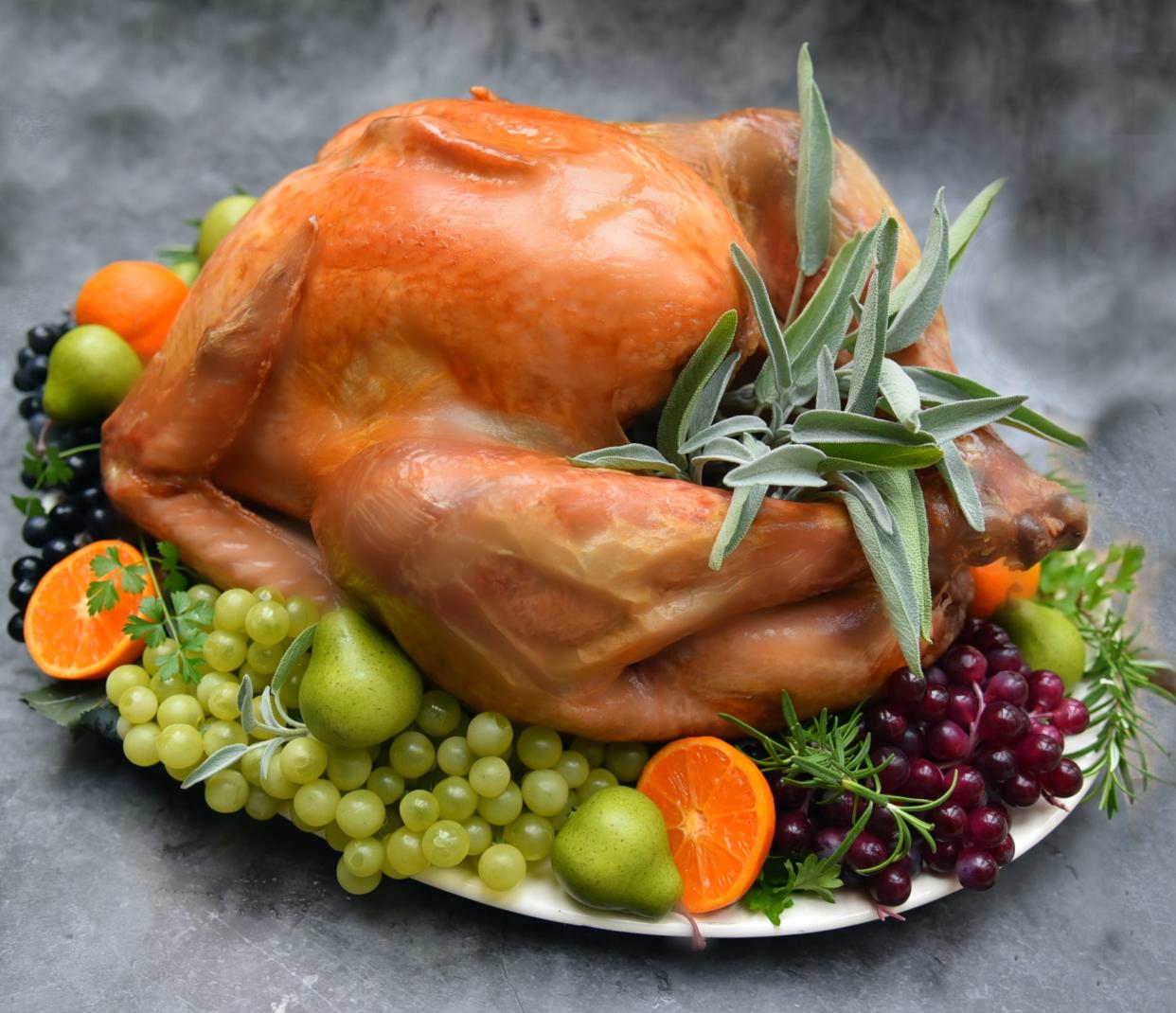Laura Kurella: Turkey-cooking crib notes

While most anyone who finds themselves in a kitchen on Thanksgiving likely has both knowledge and experience with cooking a turkey, the question of how to improve upon turkey-cooking skills remains to be the top Thanksgiving question I get asked each year.
There are many “dos” and “don’ts” that will affect outcome, and since none of us want our Thanksgiving turkey to lay an egg, here are some of my favorite tips to help make your bird’s flavors fly.
The first “do” is to buy the best bird you can afford. Most turkeys fall into a pecking order of fresh, locally-sourced, followed by heritage or organic free-range birds and commercially-frozen birds bringing up the rear.
Since poultry growers tend to have early deadlines, it’s best to decide on which bird you want by September, so you can order if need be. The same holds true on “parts only” turkey days. The parts market tends to thin out or even disappear as we near the big day, so buy early and freeze.
The opposite is true for whole, commercially-frozen birds. These drop to their lowest prices a week or two before Thanksgiving, so wait to buy until they do.
Do allow 24 hours per 4 to 5 pounds of bird for thawing, and don’t go cold turkey (putting an ice-cold bird in the oven). This will cause the bird to cook unevenly. Let the bird warm up by removing from refrigeration at least one hour before placing in oven. Don’t worry, the hot oven will kill any bacteria.
Do consider not stuffing that bird because doing so causes it to cook less evenly, and require longer cooking times, which dries out the bird. If you must stuff, keep stuffing loose, and don't serve it until it, and the bird, both reach 165 degrees.
Since dark meat does take longer to cook than white, and the back of the oven is hotter than the front, it's best to place your turkey in the oven so that its legs are pointing toward the back end of the oven.
For moist meat, do roast your bird in a covered roaster with a few cups of water or broth added to the bottom to generate steam.
Steam the bird until the thighs reach an internal temperature of 130 degrees, then remove the cover and let the turkey roast openly, basting frequently, until the bird reaches an internal temperature of 160 degrees for ideal moistness.
Remove from oven when bird registers 160 degrees then cover it loosely with foil, and allow it to rest for 30 minutes. This is the final and very important phase of the roasting because this is when the bird’s internal temperature will continue to rise to fully cooked, and its juices will settle back into the meat, making it extra moist.
While it finishes on the counter, get to work on the pan, making gravy.
Flocked with flavor, here now is a special way to cook up a spectacular bird. Happy Thanksgiving.
Flavor-infused Roast Turkey
FLAVOR INFUSION
10 fresh thyme sprigs
6 fresh sage sprigs
4 fresh rosemary sprigs
5 garlic cloves, chopped
1 tablespoon celery seed
1 teaspoon black peppercorn
1 cup unrefined mineral sea salt
3 tablespoons sugar
TURKEY
1 turkey, neck and giblets removed
1 yellow onion, quartered
1 garlic head, halved crosswise
1 bunch fresh thyme
1 bunch fresh sage
1 bunch fresh rosemary
3/4 cup unsalted butter, room temperature
1 quart low-sodium vegetable broth, plus more as needed
To make the rub, in a food processor, strip petals from thyme, sage and rosemary sprigs. Add garlic, celery seeds and peppercorns then pulse until a coarse paste forms. Add salt and sugar then pulse until blended, about 30 seconds. Rub mixture all over turkey then refrigerate it, uncovered, for at least 6 hours or up to 24 hours before cooking.
When ready to cook, using cold water, rinse rub off the turkey then pat dry with paper towels. Place the turkey, breast side up, on a rack in a large roasting pan. Let stand at room temperature for 1 hour.
Meanwhile, position a rack in the lower third of your oven and preheat to 425 degrees.
Stuff the turkey cavity with the onion, garlic, thyme, sage and rosemary then, working from the neck end of the turkey, loosen skin from the breasts and rub butter under the skin and then all over the outside of the turkey. Pour broth into the bottom of the pan then place turkey in the oven for 30 minutes.
Reduce oven temperature to 325 degrees, and cover roaster with a tight-fitting lid.
Continue roasting, basting the turkey with the pan juices every 40 minutes, until an instant-read thermometer inserted into the thickest part of the thigh, away from the bone, registers 130 degrees.
Remove cover from roaster and raise oven temperature to 375 degrees.
Continue to roast until an instant-read thermometer inserted into the thickest part of the thigh, away from the bone, registers 160 degrees. If the skin begins to brown too quickly in areas, simple tent those areas with foil.
Once turkey reaches 160 degrees, transfer to a carving board, cover loosely with foil, and let rest for 30 minutes before carving. Use pan and juice in it to make gravy.

This article originally appeared on Sturgis Journal: Lifestyles

